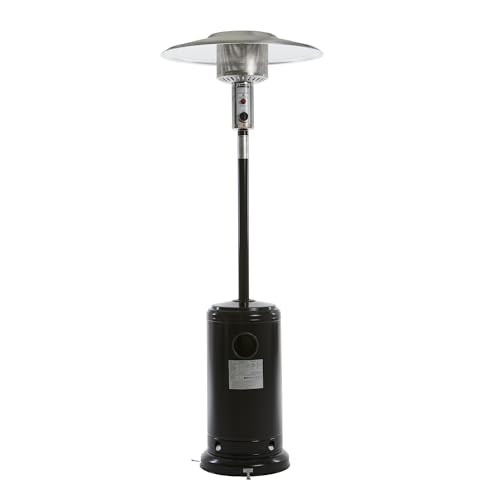The Essential Guide to Garden Heaters in the UK
As the nights attract and the seasonal chill starts to permeate into the air, garden spaces often get less attention. Nevertheless, with the help of garden heaters, home and outdoor lovers can extend their satisfaction of these spaces well into the cooler months. In the UK, garden heaters have actually evolved into an important function that adds warmth, ambience, and performance to gardens. This article explores the various types of garden heaters offered, their benefits and disadvantages, and practical ideas for selecting the best alternative for your outdoor area.
Tabulation
- Types of Garden Heaters
- Gas Heaters
- Electric Heaters
- Wood-Burning Heaters
- Patio Umbrella Heaters
- Fire Pits
- Advantages and Disadvantages of Garden Heaters
- Selection Guide for Garden Heaters
- FAQs
- Conclusion
1. Kinds Of Garden Heaters
When picking a garden heater, it is crucial to consider how successfully it warms the space while also matching the total visual of the garden. Below are the most common kinds of garden heaters offered in the UK market.
Gas Heaters
Gas heaters are powered by propane or butane, offering an effective source of heat that can warm a big area rapidly. They are frequently seen at outdoor dining establishments and coffee shops because of their effectiveness.
Pros:
- High heat output
- Mobility
- Ideal for big areas
Cons:
- Requires routine refilling of gas
- Some models can be expensive
Electric Heaters
Electric heaters are gaining appeal in property gardens due to their benefit and ease of use. Offered in various designs, they can be mounted to a wall, set up in a ceiling space, or placed as freestanding systems.
Pros:
- Easy to operate
- No need for gas refills
- Readily available in diverse styles
Cons:
- Dependent on electricity supply
- May have higher running costs compared to gas
Wood-Burning Heaters
Wood-burning heaters and ranges use a rustic appeal, perfect for producing a cozy environment in the garden. They can work as barbecues and heating sources, making them multi-functional.
Pros:
- Provides a standard aesthetic
- Can also be utilized for cooking
- Eco-friendly if using sustainable wood
Cons:
- Requires more upkeep
- May produce smoke and ash
Patio Umbrella Heaters
Patio umbrella heaters are a fantastic option for those with outdoor dining sets. These heaters are normally created to fit below a patio umbrella, offering heat to diners without blocking the view.
Pros:
- Compact and space-saving
- Easy to store when not in use
Cons:
- Limited heating radius
- Less effective compared to other models
Fire Pits
Fire pits have actually become staples in numerous UK gardens, working as both a heat source and a style function. Offered in numerous shapes and products, they develop a social center for gatherings.
Pros:
- Provides both warmth and ambience
- Suitable for celebrations
Cons:
- Requires guidance
- Not ideal for small spaces
2. Advantages and Disadvantages of Garden Heaters
Selecting the best garden heater includes weighing the benefits and disadvantages associated with each type.
| Type | Benefits | Downsides |
|---|---|---|
| Gas Heaters | Quick heat, portable | Regular gas refills, expense |
| Electric Heaters | Practical, varied designs | Based on electricity, running expenses |
| Wood-Burning Heaters | Rustic appeal, multi-functional | Maintenance needed, can produce smoke |
| Patio Umbrella Heaters | Compact, simple to keep | Limited heating radius |
| Fire Pits | Heat with atmosphere, social gathering | Needs supervision, space consumption |
3. Choice Guide for Garden Heaters
Picking the right garden heater consists of considering a number of elements. Here are ideas to remember:
- Space: Measure your outdoor location to figure out the size and output of the heater needed.
- Spending plan: Set your spending plan early, thinking about both the initial financial investment and continuous running costs.
- Design: Choose a heater that complements your garden's style and atmosphere.
- Portability: Consider whether you require a fixed unit or one that can be quickly moved and kept.
- Environment: Assess if you want an environmentally friendly alternative like a wood-burning heater or if electric or gas will suit your requirements more effectively.
4. FAQs
Q: How much heat does a garden heater produce?A: Heat output varies by model, typically ranging from 5 to 15 kW. Larger spaces may require heaters with greater outputs.
Q: Are electric heaters safe to utilize outdoors?A: Yes, however ensure they are particularly created for outdoor usage to withstand the aspects and avoid accidents.
Q: Can garden heaters be used throughout the rain?A: While some heaters are water resistant or water-resistant, using any electrical heater in a rainstorm is not encouraged. Gas heaters may be more durable.
Q: Do I require an authorization for a wood-burning heater?A: In some locations, wood-burning ranges might need an authorization or must adhere to specific policies. Always inspect local laws.
Q: What upkeep do garden heaters need?A: Maintenance varies by type; generally, examining the gas supply, cleaning up fire pits, and making sure electrical systems remain in good working order is recommended.
As the UK garden season advances beyond summer, the inclusion of a garden heater can transform an outdoor space into a year-round sanctuary. By comprehending the variety of heaters readily available, their advantages and disadvantages, and personalizing them to fit one's needs, property owners can delight in larger-than-life events under the stars, indulging in warmth and ambience. Gas Patio Heaters of garden heater not only impacts convenience but also raises the design of the garden, enabling individuals to delight in the excellent outdoors longer into the chillier months.

